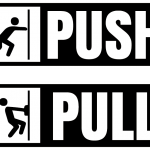When we talk about creating a good user experience people like to throw around the term “delight.” And delight is a great idea. I’m all for delighting people. But, as with so many things, it is easier said than done. It’s impossible to delight without first being reliable. Instacart‘s poor UX is a great example.
Delight is the yoga of the UX world. Yoga has amazing mental and physical benefits. But if you can’t afford food or a doctor’s appointment, yoga isn’t going to help.
It’s rare that I get a taste of a really poor user experience. But when it comes, I like to record it. Enter Instacart.

A Little Background (and A LOTR Quest)
First, a little background to explain how I ended up using Instacart for the first (and last) time on Friday. I love planning events. For the past three months I’ve been planning a Lord of the Rings themed day-long quest for 3 friends, culminating in a party at my house. From streamers to a multi-color fire pit to a 6 layer rainbow cake to a “No Admittance Except On Party Business” sign, every detail had to be perfect.
On Friday around 3pm I got a text from a friend, unable to make it to the Saturday afternoon portion of the quest. Since we needed 12 people to complete that portion, I had to replan the day and attend, rather than spending that time preparing for the party. With 3 fewer hours to prep, something would need to come off my place.
Enter Instacart!
At First, Instacart Was Delightful
Instacart has great marketing, and a truly intuitive UI. Compared to Drizzly or Grubhub (other delivery systems), I was amazed at how easy it was to use. So at 3pm on Friday I signed up and placed a food order. I waited until getting home from work to place the alcohol order, since I would need to be home and show my ID for that delivery.
Fast forward to ~9pm Friday evening. The first riddles and Hobbit cloaks have been delivered to my friends, the first load of dishes are in the dishwasher, the hard boiled eggs are ready to devil, the punch bowls are labeled and ready for punch-making on Saturday… in other words, a lot is going on, and I still need to order the alcohol. It takes a little while, because I need to find somewhere that is delivering tonight, and has everything I need. I order about $300 worth of booze, and press “confirm.”
Error message. Fraud alert.
Instacart’s Poor UX
But it’s not the end of the world. I try to return to the start and see what they need from me… but I’m locked out of my account. So I call the number to “confirm [my] identity.” That’s when I hit major issue #1. The person answering the phone has no idea what I’m talking about. They tell me that perhaps I need to restart my router. They tell me they don’t know anything about a fraud department.
Now I’m starting to feel panicky. That’s when I see the email in my Gmail account.

Of course I’m in a rush, and all I see at a glance is “photo of your driver’s license” and “photo of your payment card.” I panic. This sounds like someone trying to steal my identity. I send a quick email back saying I will NOT email payment information over an unsecured network like Gmail, and I receive back an email reiterating that I can cover the first 12 digits of the card.
Good UX Means Offering Support
At this point I’ve spent (wasted) about 15 minutes panicking about Instacart. That’s when my husband finishes his crazy day at work, comes in, and reminds me that we’re throwing a party, not evaluating Instacart’s poor UX. In other words, I don’t have to use Instacart. If they’re not helping, it’s time to step away.
Services like this are meant to support me in my goal, and my goal was to throw a phenomenal party. So we move on. We order using Drizzly, a subpar service with poor UI but seemingly solid security. A friend offers to pick up the wine that Drizzly doesn’t carry but I absolutely must have. And I return to my deviled eggs and sliced cheese.
The next day I get a blank email from Instacart that seems to be an automated email from a ticketing software. I recognize the software, and so I know this is not a virus email. I doubt most people would know that.
Takeaways: Good UX Requires Strategy
Great design, great UI, great content… it’s nothing without a great underlying strategy. That strategy needs to understand the reasons someone uses your service.

There were a lot of issues with the user journey I took. But Instacart’s poor UX was due to a few consistent problems:
- The system was set up for an experience that goes well. The error messages and fraud alerts were the weak links.
- Although Instacart is able to know a lot about me, they made no effort to be transparent. Thus I received creepy emails saying things like “Thank you for your response” when I had sent no previous email. The “response” they’re referencing is likely the phone call I made (I think?). Alternatively, this is just personalization gone wrong, and I should have received a different email.
- The email assumed I would read it at length and in detail. But people who are panicking skim.
- All the UX was focused on front-end elements. But a UX strategy needs to consider both what you say and what you do. For example, it’s not helpful to say “we care about your security” if your security team doesn’t have a plan for confirming identities.
The party was a phenomenal success. But no, I won’t be reopening my Instacart account.



